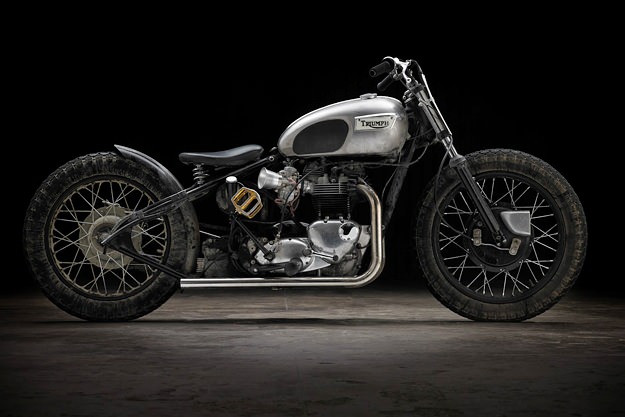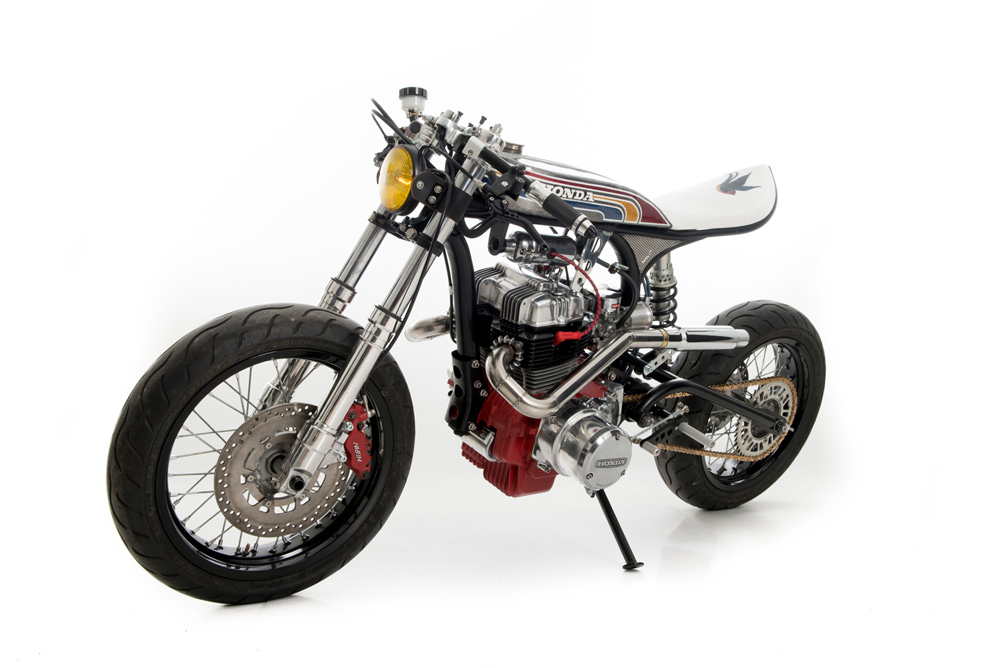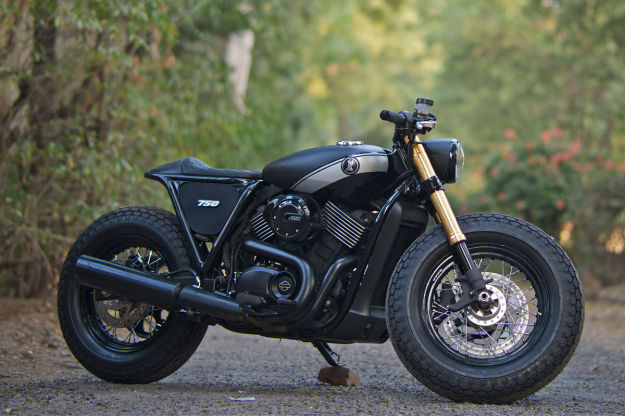Motorcycle safety and fun: Mutually Exclusive?
What’s your opinion? How much fun can you have and still maintain a safety mindset?
I think these two concepts go well together rather than being diametrically opposed. How can this be? I think some explanation of my concept of safety is warranted here.
Motorcycle safety, I think, carries with it some misconceptions. What do you think of when someone says “motorcycle safety?” Do you picture tooling down the highway in the slow lane going 10 MPH below the speed limit? Do you picture bicyclists passing you on curves because you’re being safe by going slow? Do you picture someone in full safety motorcycle gear – including a helmet, boots, long pants, protective jacket and gloves? What about speed? Is going slow always required for motorcycle safety? Do you picture that anal retentive rider who’s obsessed with his bike – ensuring that his horn and turn signals work properly, that his chain slack is within specs and clean & lubricated, that his motorcycle tires are properly inflated and have the proper tread depth, and that he’s ready for a trip to a motorcycle parts store because he sees oil leaks from his engine? Some of these are what I consider in the concept of motorcycle safety.
What I mean by motorcycle safety is ensuring that both you and your motorcycle are in peak condition to avoid colliding with the ground, immobile objects or other vehicles. Let’s start by considering our mindset when we ride. Safety means that we assume responsibility for our safety by being overtly proactive. This means using some standard techniques taught in basic motorcycle rider courses. For example there are three time-distances we should always consider to reduce our risk.
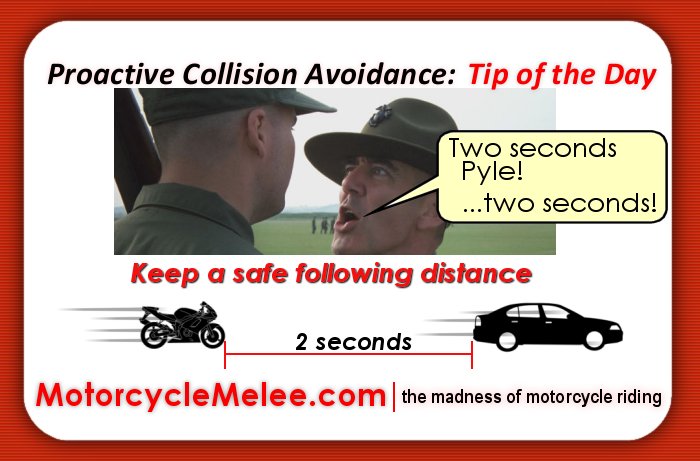
First there’s the 2-second following distance. We can increase our ability to avoid crashes by maintaining a 2-second following distance when we are traveling behind another vehicle. Then there’s the 4-second emergency egress distance—looking for things that are happening within 4 seconds of your travel to ensure you plan for an escape route. Finally, there’s the 12-second time-distance. Looking ahead in your direction of travel 12 seconds down the road to see what, if anything, is happening that may require you to react. Using these proactive techniques is a safe way to ride – regardless of how fast you are going. These techniques help you spot both bad cager driving and potential road debris that can ruin your day. While being proactive is a vital safety technique, you also need a safe motorcycle.

“How do I ensure my motorcycle is safe?” Well I’m glad you asked. Consider the obvious things like your motorcycle tires – you only have two, so they should be properly inflated and in good condition. Basic rider courses offer a great in-depth process for checking your bike’s safety. For me, I use a 45-second safety check every time before I ride my motorcycle. This safety check involves ensuring your signals work, your tires are good, your chain will support you, your horn at least makes a sound and the bike will ride true. So now we’ve addressed our mindset and our equipment, there’s one more controversial subject.
As motorcyclists we assume risks cagers don’t—which leads me to my final controversial safety concept—motorcycle gear. I’m a firm believer that as a motorcyclist you can decide if you want to wear motorcycle gearor not. Frankly, motorcycle safety gear is primarily designed to reduce injury when you crash. So, if you never crash, safety gear is a waste of your money. But, if you crash and don’t have gear you will incur injuries that will potentially cost you more in hospital visits than the gear that may have prevented the injury. The minimum gear I personally recommend is: boots, long pants (jeans), gloves, a helmet and protective jacket. Each of these will reduce the negative impact of a crash. While these will help in a crash, a helmet can help avoid a crash.
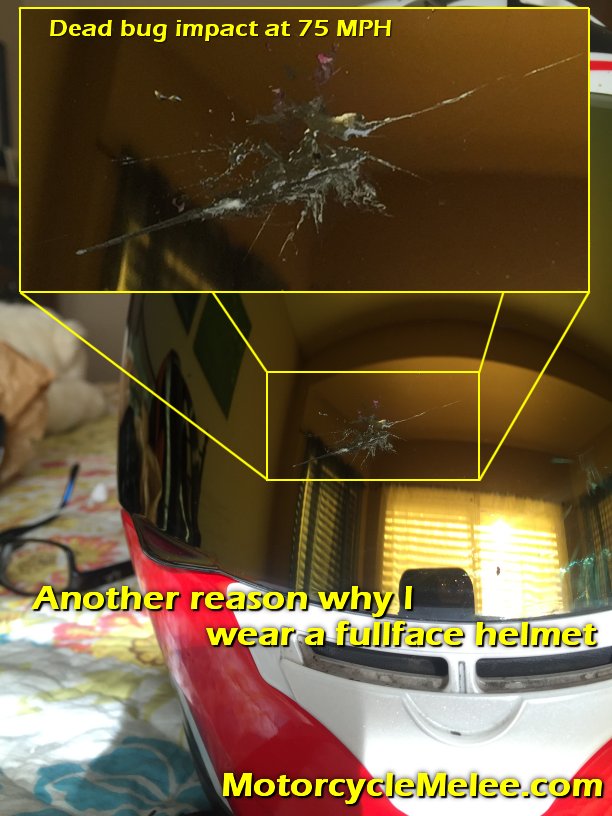
What do I mean? Many times riding to and from work (about 85 highway miles) I have killed very large bugs with my face shield. These bugs impacted my face shield with significant force (as a bug would when hitting anything at 75-80MPH). Had I not been wearing my full faced helmet those bugs would have crashed into my face causing me to react in a jerking fashion. And we can imagine what happens when I jerk my handlebars at 75-80MPH. So while I recommend the standard ATGATT (all the gear all the time) concept to reduce injury in a crash, as an absolute minimum I recommend a full faced helmet to prevent a crash.
So are fun and motorcycle safety mutually exclusive? I hope you recognized that I didn’t say going slow was always safe. There are indeed times when speed is a good safety technique—and as motorcyclists we have the benefit of the power-to-weight ratio to get us out of harm’s way. For example, if you’re riding on the highway and traffic begins to crowd around you, being proactive by accelerating briefly to get away from traffic is a good (and fun) thing. I also hope you recognized I didn’t say cornering fast was always a no-no. Cornering is a primary reason for riding a motorcycle and if you’ve done your safety check of your motorcycle and have a good mindset (Hey, am I skilled enough to make this corner at this speed? Is there other traffic that I will cause to crash?) then have your fun with some fast cornering. Be proactive and throttle up where it’s safe to do.
MotorcycleMelee.com is designed to help motorcycle riders ride into their ripe old age by paying attention to safety concepts and techniques. We welcome your comments and questions. Drop us a comment below.









